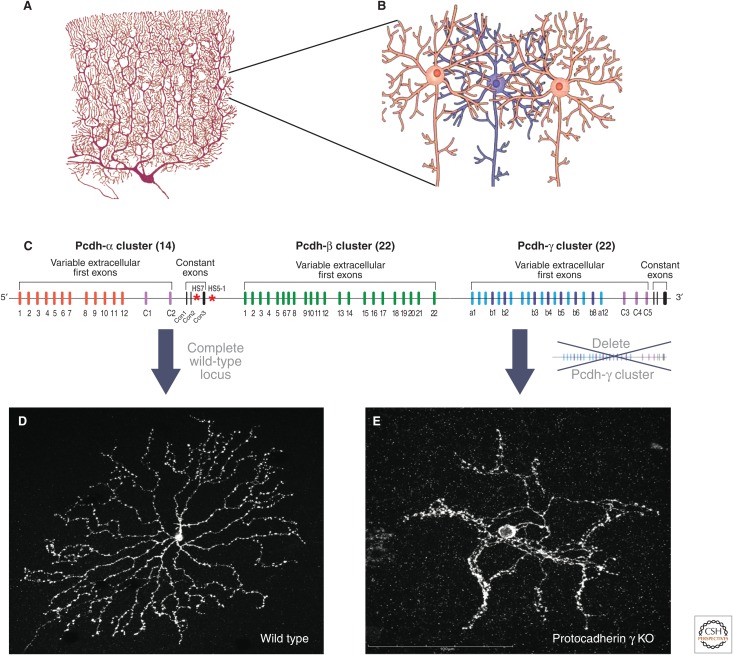Figure 3.
Neurons require a mechanism for self-recognition. (A) Drawing of a Purkinje cerebellar neuron emphasizes the elaborate dendritic arborization. (B) Arbors of the blue neuron must make connections with the neighboring orange neurons while avoiding connectivity with other blue arbors. This image emphasizes the need for a “barcoding” mechanism for self-avoidance. (C) The genomic organization of clustered Pcdh genes. Pcdh-α, -β, and -γ clusters span a genomic region of ∼1 Mb. The α cluster has 12 monoallelically variable exons and two biallelically expressed variable exons (C1 and C2). All variable exons splice to the three constant exons that code for the intracellular region. Similarly, the Pcdh-γ cluster has 19 monoallelically expressed variable exons and three variable exons (C3, C4, and C5) that are biallelically expressed. All variable exons splice to the constant exons except at the β cluster. (D) Wild-type retinal starburst amacrine cells. (E) Deletion of the 22 variable exons of the Pcdh-γ cluster abolishes self-avoidance of retinal starburst amacrine cells resulting in dendritic collapse and luck of arborization.

